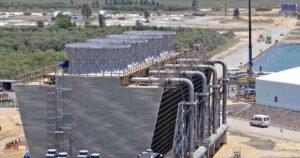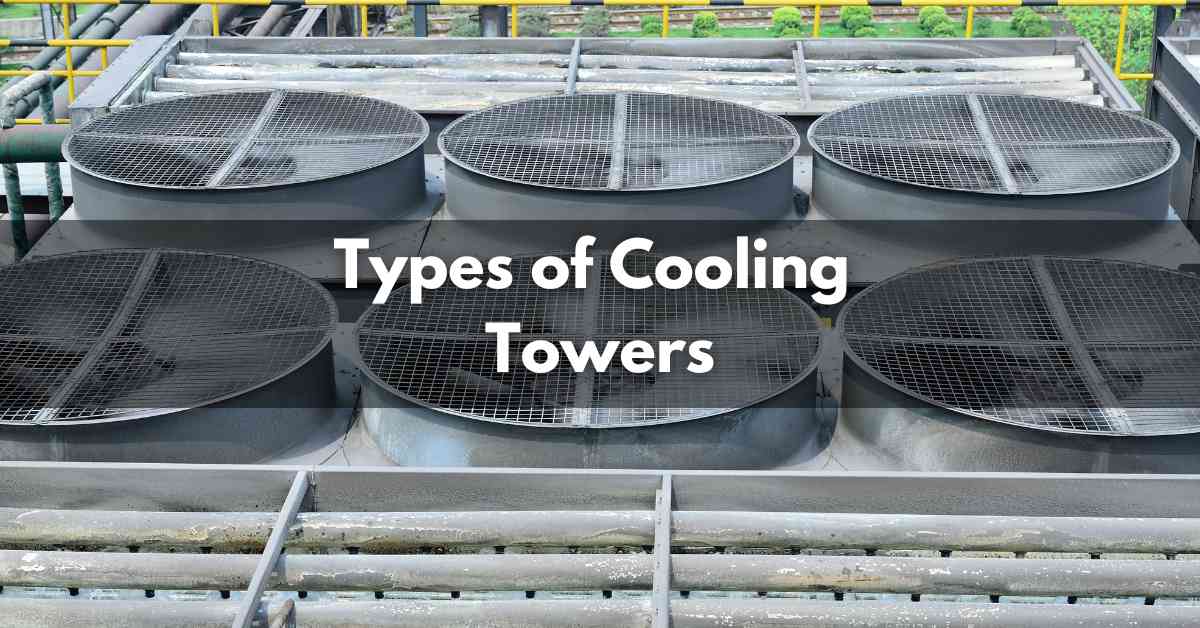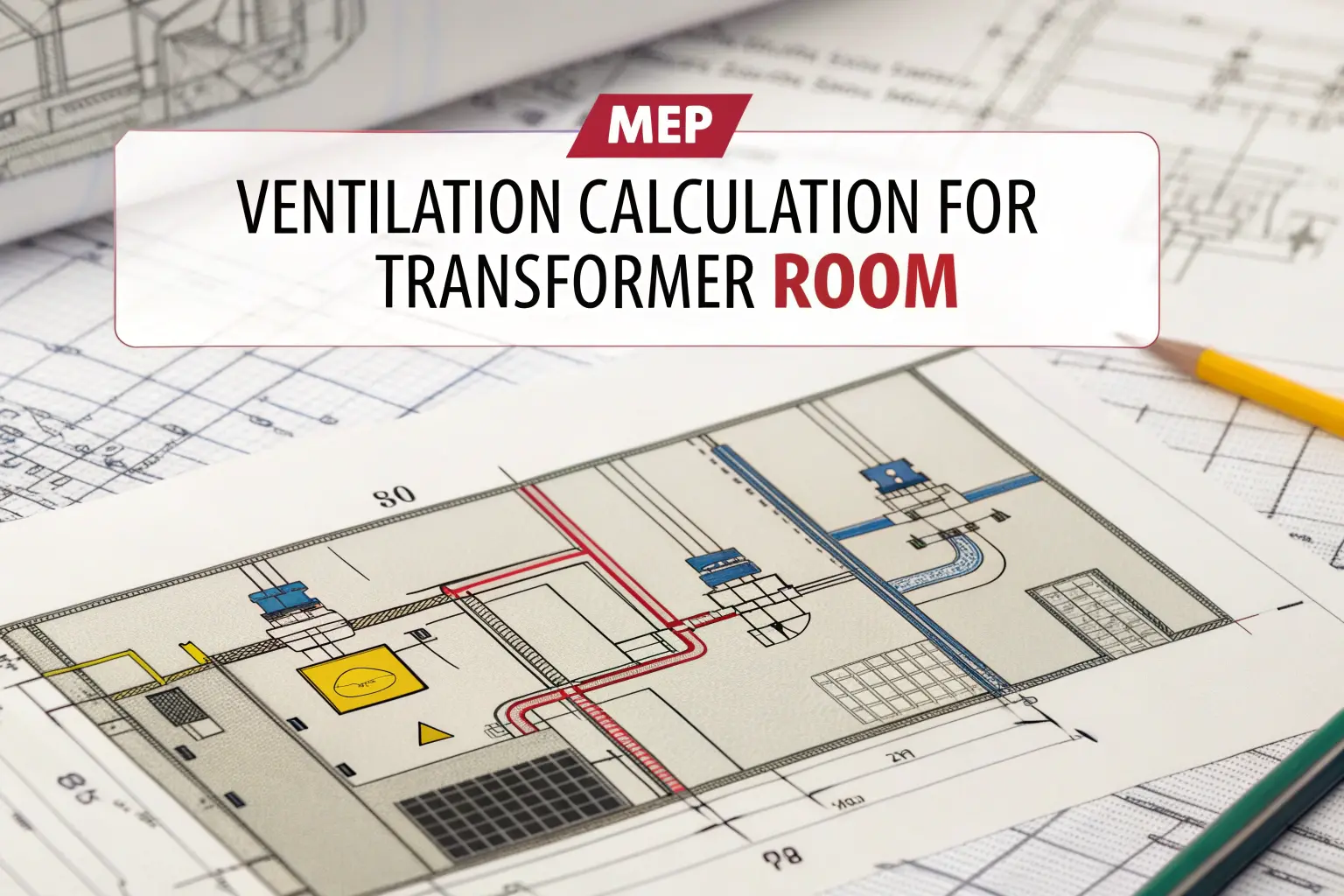Cooling towers are essential for cooling water and preventing equipment from getting too hot. They are used in places like oil refineries, chemical plants, and power stations. You can also find them in factories and buildings with HVAC systems. There are different types of cooling towers, and it’s important to pick the right one for your needs. This guide will explain what cooling towers are, how they work, and the types of cooling towers available.
What is a Cooling Tower?
A cooling tower is a device that helps get rid of heat. It cools water by mixing it with air and releasing the extra heat into the atmosphere. Cooling towers are important for industries because they produce a lot of heat. Facilities need to get rid of this heat to keep things cool and prevent equipment from breaking down or catching fire.

Cooling towers come in different sizes, from a few square feet to several hundred feet. Their sizes allow them to handle various heat loads. They also come in various shapes and designs, which we’ll explain more later.
All cooling towers do the same main job: they increase the area where air and water meet. A larger area means better evaporation, and better evaporation leads to faster cooling.
How Cooling Towers Work
Hot industrial water flows into the cooling tower from the top. It then moves down through the tower. Inside, equipment spreads the water over a large area, often turning it into small droplets or thin films. This increases the contact between the water and air, helping the water lose heat through evaporation.

As the water moves through the tower, it cools down. When it reaches the bottom, it collects in a sump. The sump sends the cold water back to cool the hot machinery. When the equipment heats the water again, it returns to the cooling tower, and the process starts over.
Types of Cooling Towers
Cooling towers come in several designs that use different technologies to cool process water. Here are some types:
- By Air Flow Direction: Towers can have air flow that moves horizontally or vertically.
- By Fan Type: Towers may use mechanical fans or rely on natural convection.
- By Fan Position: Fans can be placed in various ways.
A single cooling tower might fit into more than one category, such as a counterflow induced draft or a crossflow forced draft tower.
If you need a reliable cooling tower, several well-known brands can provide high-quality options. Companies like EVAPCO, ENEXIO, Baltimore Aircoil Company (BAC), Cooling Tower Systems, and American Cooling Tower offer trustworthy products.
1. Crossflow
Crossflow cooling towers get their name because the air moves horizontally across the water flow. These towers use splash fills that let the air flow sideways through the tower. Meanwhile, gravity makes hot water flow down from the distribution basins at the top.
Crossflow cooling towers are tall and easy to maintain. They use gravity to help air and water mix, so they need smaller pumps, making them cost-effective and easy to manage while running. Their non-pressurized spray allows for flexible water flow.
However, crossflow towers are more likely to freeze than counterflow towers and can be less efficient. Their design also makes them more prone to getting clogged with dirt or debris, especially in windy, sandy, or dusty areas.
2. Counterflow
Counterflow cooling towers get their name because air and water enter from opposite ends. In these towers, water flows down from the top, and air moves upward through the splash fill, from the bottom to the top. Since the airflow goes up, counterflow towers use pressurized spray nozzles instead of gravity-flow basins to distribute water over the splash fill.
Counterflow towers are usually smaller than crossflow towers, which can make them more efficient. Their spray distribution also makes them less likely to freeze compared to crossflow towers. The large spray area helps with heat transfer.
However, counterflow towers need more energy and larger pumps to push air against the water flow, which can lead to higher energy costs and operational issues. They may also face problems with varying water flow, affecting their spray performance. Additionally, they can be noisier because the water falls from a greater height into the collection basin.
3. Natural Draft
Natural draft cooling towers use natural convection instead of mechanical systems. Air moves through the tower because of differences in air density. Cold, dry air enters the tower and is less dense than the warm, moist air that leaves after touching the hot water. As a result, warm air rises and cold air falls, creating a steady flow that cools the incoming water and releases heat. These towers often have a steep chimney to boost the vertical air flow.
A well-known type of natural draft cooling tower is the hyperbolic cooling tower. It has a chimney-stacking design that lets cool outside air push the warm, moist air out. The tower’s bottom has splash fill, and the rising cool air helps to cool the water that sprays over it.
Hyperbolic towers are efficient because their shape directs air flow upward. They are strong and require less material to build. These towers are commonly used in industrial settings, like coal-fired power plants.
4. Induced Draft
Induced draft cooling towers use fans to move air through the tower. These fans are usually at the top of the tower where the air exits. The fans pull cool air into the tower and push warm, moist air out.
One benefit of this setup is that the fans make the air move quickly when it leaves the tower. This high-speed air flow helps keep the air from coming back into the tower.
5. Forced Draft
A forced draft tower is like an induced draft tower, but its fans are placed differently. In a forced draft tower, fans are at the air intake, not the outlet. These fans push air into the tower instead of pulling it.
Forced draft towers pull air in quickly but release it more slowly due to friction inside the tower. This slower release makes them more likely to have air recirculation problems. They are also more expensive and less efficient to run because they need more power. Like crossflow towers, forced draft towers are more likely to freeze.
However, forced draft cooling towers are great for indoor facilities because they handle high pressure well, making them suitable for smaller indoor spaces.
Key Components of Cooling Towers
Here are some key parts of many cooling towers:
- Fans: Many cooling towers have large fans that move air through the tower. Not all cooling towers use fans, but those that do either push or pull air through the tower. Fans can be axial (more efficient) or centrifugal (quieter and handle higher pressure).
- Fill: The fill, also known as the wet deck or surface, is usually made of textured polyvinyl chloride (PVC). It has ridges with gaps to let air and water pass through. This part helps increase the water’s surface area, which improves heat transfer between the water and air. There are different types of fill. Film-type fill spreads water into a thin film, while splash-type fill breaks water into smaller droplets.
- Spray Nozzles: In some cooling towers, like counterflow towers, spray nozzles spray small droplets of water into the air. This helps spread the water evenly over the fill and increases the water’s surface area for better heat exchange.
- Distribution Basin: In crossflow cooling towers, the distribution basin (or hot water basin) spreads hot water evenly over the fill. It sits at the top of the tower and has holes or nozzles that release the water.
- Collection Basin: The collection basin (or cold water basin) is at the bottom of the tower and collects the cooled water. In custom-built towers, these basins are often made of concrete to support the heavy water.
- Inlets and Outlets: Inlets bring cool air into the tower, while outlets release the warm air after it has absorbed the heat from the water.
- Drift Eliminators: Drift, or water loss, happens when water droplets escape with the outgoing air. Drift eliminators prevent this by directing the airflow in different directions to keep the water inside the tower.
Methods of Assembling Cooling Towers
Cooling towers can be assembled in two main ways: at the factory or on-site.
Factory-Assembled
In this method, factory workers build the cooling tower in the factory. After assembly, they ship the completed tower to its destination. This method is usually best for smaller towers because larger ones can be hard to transport and might get damaged during shipping. Factory-assembled towers are suitable for less demanding uses, such as in food-processing plants or automotive facilities.
Field-Erected
If a cooling tower is too large, delicate, or difficult to ship, it can be assembled at the site where it will be used. In this case, the manufacturer or supplier provides the labor to build the tower close to the industrial processes. Field-erected towers can be designed as crossflow or counterflow types. They can be much larger, making them ideal for industrial applications that require a lot of power.
Conclusion
So, the right choice of cooling tower is critical for the effective control of heat in a number of industrial and HVAC applications. The different types of cooling towers: Crossflow, counterflow, natural draft, induced draft, forced draft have their own strengths and weaknesses based on factors like efficiency, maintenance etc. These disparities assist in selecting the appropriate cooling tower suited to particular requirements for assurance of dependable operation as well as energy effectiveness. Facility owners can maximize the cooling capacity for their buildings and protect their valuables from excessive heat by looking at such institutions as; size of the tower under consideration its design and placement thereof.
FAQs
What are the types of cooling towers?
Forced draft, induced draft, and natural draft cooling towers are the main types.
Which cooling tower is best?
Counter flow towers are usually more efficient than cross flow towers and help industries save water.
What are the two classes of cooling towers?
Forced draft and induced draft cooling towers are the two classes.
What are the three types of cooling tower fans?
Cooling towers can be crossflow, counterflow, or hyperbolic, with airflow types being induced draft and passive draft.
Read More – Refrigeration Cycle: Key Components and Their Uses











